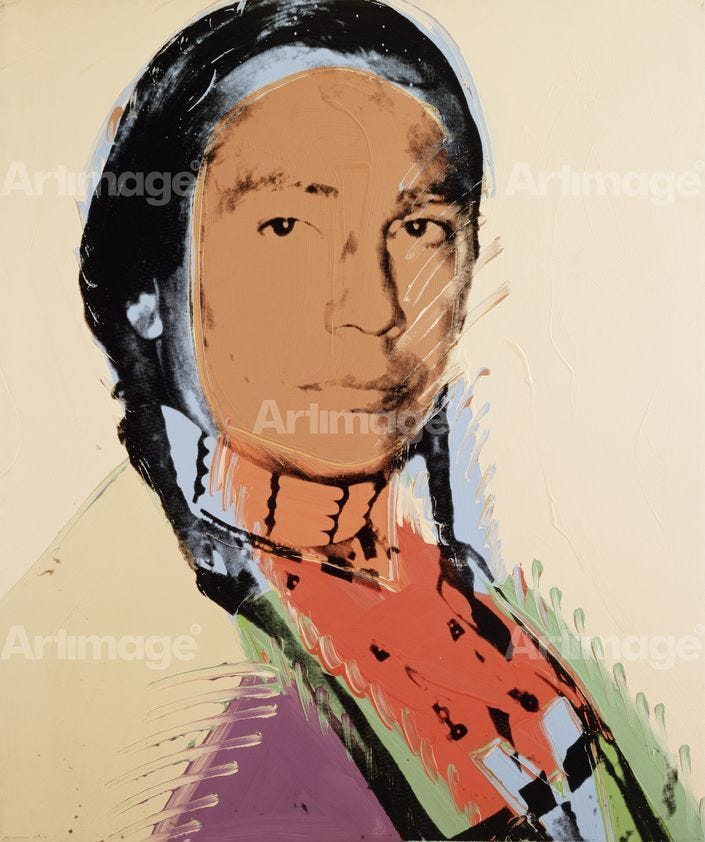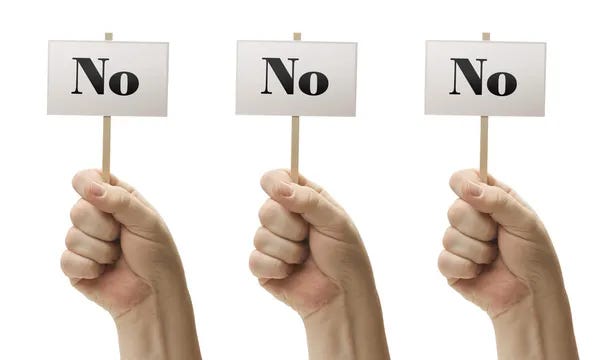“My name is ‘no.’ My sign is ‘no.’ My number is ‘no.’ You’ve got to let it go.” —Meghan Trainor
“‘No’ is a complete sentence.” — Anne Lamott
“Let it be said that I did not go quietly.” — Russell Means

Refusal is a powerful act.
When a man or woman refuses a sexual predator, they are likely to be assaulted in response.
When a soldier refuses to kill people he does not see as his enemy, s/he can be courtmartialed, imprisoned, even shot, depending on the circumstances.
Most folks know the story of community organizer Rosa Parks who refused to move to the back of the bus.
But Barbara Pope, 50 years earlier, refused to give up her seat on a “whites only” train, sued the railroad and won. Her action inspired the strategies and tactics of civil rights activists fighting Jim Crow in the South who followed her.
Those activists, as you know, paid the price for their refusal to accept segregation with jail time, beatings, and in some cases death. It took decades for their work to bear fruit in the passage of the Civil Rights of 1964, and the Voting Act of 1965.
The people of India who won their freedom in 1948 through sustained campaigns and creative actions saw many of their loved ones beaten, jailed, and brutally killed.
What I’m suggesting isn’t new. It’s called “nonviolent noncooperation” with systemic oppression and oppressive individuals. It’s been around since the first human tried to oppress the second human, and it works.
In 494 B.C., the plebeians of Rome withdrew from the city and refused to work for days in order to correct grievances they had against the Roman consuls, according to the New York Nonviolence Network.
Every successful strike is an example of a successful nonviolent noncooperation campaign.
In 1920, an attempted coup d'etat led by Wolfgang Kapp against the Weimar Republic of Germany failed when the population went on a general strike, refusing to give its consent and cooperation to the new government.
There are countless ways to nonviolently resist systems of oppression.
The satyagraha warriors in India directly confronted the British Empire in their actions. The activists of the Civil Rights Movement likewise directly confronted their oppressors. They said “no” to their oppressors’ faces, and many of them suffered for it.
But not everyone is cut out for satyagraha. Fortunately, there are many other more subtle actions can also disrupt oppressive systems.
Many of you have probably seen the film Schindler’s List. Oskar Schindler was a German industrialist and a military intelligence officer in the Nazi party. These two distinctions put him in a unique position to save the lives of Jews who would otherwise have been murdered.
More than 1,000 Jews worked in Schindler’s ceramics factory in Poland and later his armaments factory in Germany. Over the course of several years, he used his entire fortune to bribe Nazi officials with cash, diamonds and black market goods to keep his workers working with him, or rescue them from ghettos and concentration camps. He used flattery and diplomacy when bribes didn’t work.
Schindler built safe housing and hospitals for his Jewish workers on the grounds of his factories, to prevent their being forced to live in ghettos and concentration camps torture and death was likely. His wife Emilie provided medical care to many who were too ill too work.
He smuggled intelligence and money for the Jewish Underground. What little money he had left he used to buy food and other supplies from the black market for his workers. At his armaments factory in Brunnlitz his workers produced faulty explosives intentionally in an effort to sabotage the war effort.
During World War II, after Germany invaded Denmark, the Danish government adopted a policy of official cooperation and unofficial obstruction which they called "negotiation under protest." This unofficial resistance included slow production, emphatic celebration of Danish culture and history, and bureaucratic quagmires.
Say “yes,” do “no.”
In 2001, 2004 and 2007 I was arrested with the American Indian Movement of Colorado in Denver, along with several of my closest friends, for refusing to move out of the street and allow a Columbus Day parade to pass in our city. Sometimes the arrests were nonviolent, sometimes they were very violent on the part of the police. We, the protesters, retained our discipline and dignity, even in jail.
These protests were part of a 30-year campaign by AIM Colorado (including the participation of Mr. Means, above) which ultimately led first to the city of Denver, and then later the State of Colorado repealing the Columbus Day holiday in the very state where it began.
In 2007, my then-5-year-old goddaughter was standing on the sidelines with her mother the day I was arrested. She heard me scream when SWAT used a pain compliance hold on me to force me to stand. When I was released from jail, she embraced me like she would never let me go.
She’s now a grown, badass warrior-woman herself, and I know that comes from watching her lifelong activist parents. I believe any example of nonviolent resistance to unjust authority or racist behavior can show our children the necessity and the power of standing up against injustice.
Noncooperation works because the oppressors simply cannot achieve their aims without our passive or active cooperation. This is one of the reasons laws exist: they’re cheaper than bullets for coercing the civilian population.
There are myriad ways we can either quietly refuse to cooperate with their plans, protect the most vulnerable among us, and/or directly confront oppressors with our refusal.
And such refusal not only makes it infinitely harder for them to oppress, but it shakes them psychologically. The notion that anyone would or could have the self-respect, integrity, and willingness for self-sacrifice necessary to refuse to accede to their demands undermines the entire fascist worldview.
The idea that people would put their lives on the line to protect others is a direct challenge to hate which it cannot bear.
Make no mistake. People will be hurt, imprisoned, deported, killed. Your resistance may cost you your job, your home, your love, your faith community, your family, your freedom, or your life. You have to know that the moment you commit to being a nonviolent warrior for change.
And you must know that most nonviolent actions are not successful, at least not at first, and not in and of themselves, at bringing the change desired. Meaningful change usually requires strategic campaigns, complete with the building of organizations and alliances, over many years. As I wrote in my last essay, success will require patience. Huge, lumbering gobs of it. Rome wasn’t brought down in a day.
Now, I promised you a funny anecdote about Warhol’s painting of Russell Means above.
I have a dear friend who has been in AIM pretty much since she was in diapers. Oglala Lakota, like Mr. Means, she served in AIM security for many years, often as one of Mr. Means’ bodyguards (not really sure why he needed them; he was 6’4” and survived being shot 6 times).
Years later my friend worked as a security guard at the Denver Art Museum. I went to meet her for lunch one day when, unbeknownst to me, they had a Warhol exhibit on.
I looked everywhere for her, and eventually found her guarding the portrait above. I looked at her, looked at the painting, looked at her, and we both burst out laughing.
She said, “I can’t believe after all these years, I’m still guarding him!”





Good commentary Val— so many people have no clue at all about nonviolence. Appreciate your witness. Shirley
I love this empowering column and I love your spirit Val! And Russell Means spirit, not to mention the Gazan's/Palestinian's, is flowing right through you. Si, Se Puede!